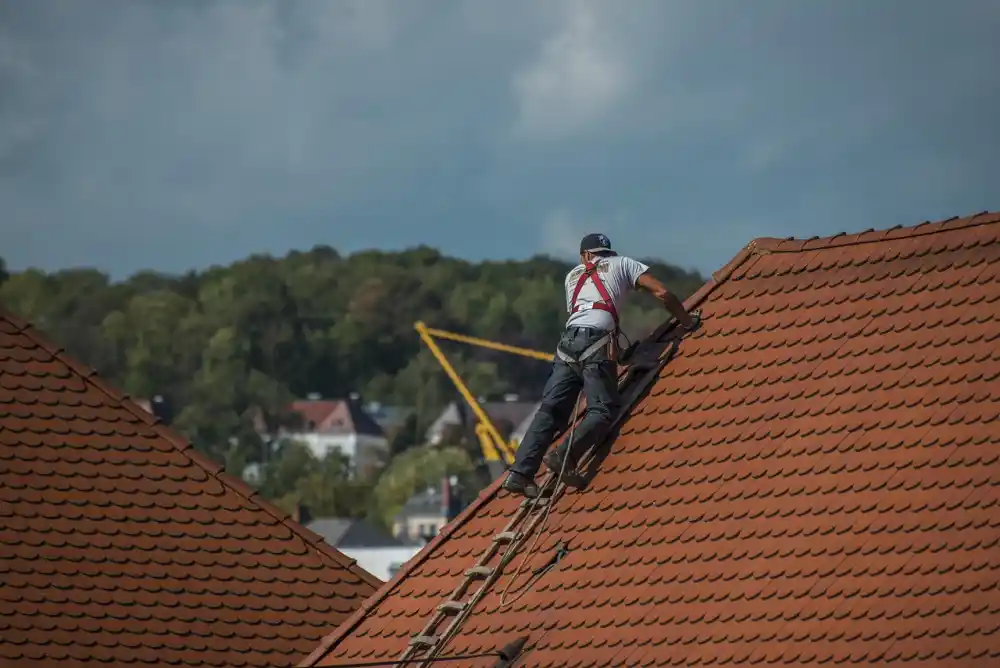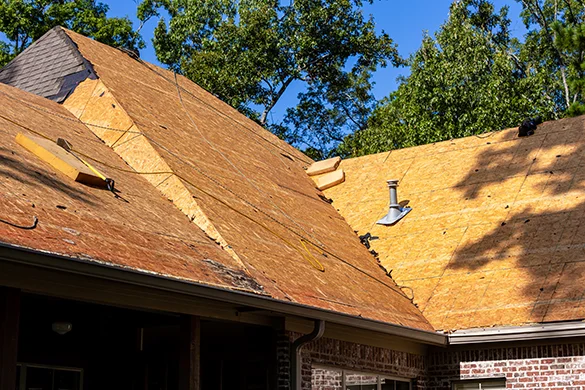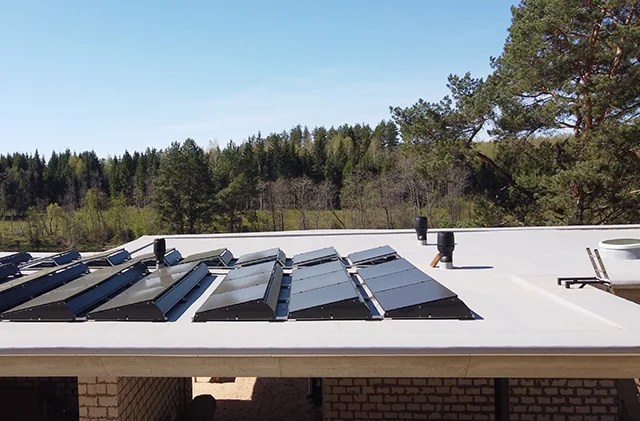How Do You Repair a Leaking Roof? 5 Mistakes to Avoid in DIY Fixes
A leaking roof demands immediate attention, but rushing into DIY repairs without proper knowledge often creates bigger problems than the original leak. While some homeowners successfully handle minor roof repairs, five common mistakes turn simple fixes into expensive disasters. Understanding these errors helps you decide when to tackle the job yourself and when professional help makes more sense for your Northern Virginia home.
Mistake #1: Using the Wrong Materials for Emergency Patches
The most frequent DIY mistake involves grabbing whatever materials are immediately available rather than using products designed specifically for roofing repairs. Homeowners often reach for general-purpose caulk, household sealants, or even duct tape when they discover a leak. These products fail quickly because they weren't engineered to withstand constant UV exposure, temperature extremes, and water pressure that roofing materials face daily.
Proper roof repairs require materials matched to your specific roofing system. Asphalt shingles need roofing cement and matching shingles, while flat roofs demand compatible membrane patches and sealants. Using incompatible materials can actually void manufacturer warranties and create additional leak points. Understanding proper flat roof repair techniques prevents costly mistakes on low-slope systems.

Mistake #2: Failing to Find the Actual Leak Source
Water rarely enters your home directly below where it penetrates the roof. It typically travels along rafters, sheathing, or insulation before dripping through ceilings, sometimes several feet away from the actual entry point. Many homeowners patch the ceiling stain location or the most obvious roof damage without tracing water to its true source.
This mistake leads to repeated repairs that never solve the underlying problem. Water continues entering through the original breach while homeowners waste time and money patching symptoms rather than causes. Proper leak detection requires inspecting from inside the attic during rain, looking for water trails on roof decking, and checking common failure points like flashing around chimneys and vents. Professional roof repair specialists use detection methods that locate hidden leaks homeowners typically miss.
Mistake #3: Ignoring Safety Protocols and Equipment
Roof work involves significant fall hazards that many DIY enthusiasts underestimate. Climbing onto wet, pitched surfaces without proper safety equipment, stable ladder placement, or understanding of secure footing creates life-threatening situations. Emergency rooms regularly treat homeowners who fell from roofs during repair attempts.
Beyond falls, working on roofs exposes you to electrical hazards from power lines, heat-related illness during summer months, and potential structural damage if you step through weak roof sections. Professional roofers carry liability insurance, workers' compensation, and specialized safety training that protect both workers and homeowners. Similar to understanding when professional siding repair outweighs DIY risks, roof work often requires expert handling.

Mistake #4: Temporary Fixes That Become Permanent
Tarps, emergency patches, and quick sealant applications serve valuable purposes as temporary measures during active leaks or storms. Problems arise when these stopgap solutions remain in place for months or years because the leak seems to have stopped. Temporary materials deteriorate rapidly, and what began as a minor repair need escalates into major damage requiring extensive work.
Tarps flap in wind, tearing and creating new leak points. Temporary sealants dry out and crack, allowing moisture behind them where it causes hidden rot. These delayed problems often cost far more to fix than the original leak would have required. Northern Virginia's climate changes demand permanent solutions that can withstand humidity, freeze-thaw cycles, and seasonal storms. Understanding when repairs suffice versus when replacement is necessary prevents temporary patches on roofs that need comprehensive attention.
Mistake #5: Attempting Repairs in Dangerous Weather Conditions
Desperation to stop active leaks drives homeowners onto roofs during rain, ice, or extreme temperatures when conditions make safe work impossible and proper repairs ineffective. Wet shingles won't seal properly, cold temperatures prevent adhesives from bonding, and slippery surfaces dramatically increase fall risk. These rushed repairs rarely last because materials can't be installed correctly under adverse conditions.
Professional roofers understand when weather allows for temporary measures versus permanent repairs. They know how to stabilize leaks from inside the home during storms, then return for proper exterior repairs when conditions permit quality work. Emergency tarping can protect interiors until safe, lasting repairs become feasible. Working with trusted roofing contractors ensures emergency response that doesn't compromise long-term solutions.
Hidden Costs of DIY Roof Leak Repairs
Beyond the immediate risks, DIY roof repairs carry hidden costs that often exceed professional service fees. Purchasing specialized tools and materials for a one-time repair means spending on equipment you may never use again. Mistakes frequently require calling professionals anyway, now to fix both the original leak and damage caused by improper repairs.
Time represents another significant cost. Roof leak diagnosis and repair typically take professionals a few hours but can consume entire weekends for homeowners learning as they go. Factor in multiple trips to roofing supply stores, research time, and the stress of working in potentially dangerous conditions. For busy Northern Virginia homeowners, professional service often provides better value when all factors are considered.

When DIY Roof Repairs Make Sense
Despite the risks and common mistakes, certain roof leak situations suit careful DIY approaches. Obvious, accessible problems like a single missing shingle on a low-slope section or a clearly loose nail that can be reached safely from a ladder may not require professional help. Small, surface-level repairs on newer roofs in good overall condition present lower risk for capable homeowners with proper safety equipment.
Success requires honest assessment of your skills, available tools, and comfort with heights. If you proceed with DIY repairs, invest in proper materials designed for your specific roofing type, take weather conditions seriously, and never compromise on safety equipment. Most importantly, recognize when a problem exceeds your capabilities and call professionals before minor issues become major disasters. Understanding basic asphalt roof repair principles helps you make informed decisions about DIY versus professional service.
Insurance Implications of DIY Roof Repairs
Homeowner insurance policies often have specific provisions regarding DIY repairs and subsequent damage. Improper repairs that lead to additional problems may not be covered, leaving you responsible for all costs. Some policies require professional documentation for leak repairs to maintain coverage eligibility for future claims.
Professional roofers provide detailed documentation, photos, and written reports that insurance companies require for claims processing. They understand how to work with adjusters and can identify all storm damage that qualifies for coverage, often recovering more than the repair cost. Before attempting DIY fixes on leak damage that might be insurance-covered, consult your policy and consider whether professional documentation protects your interests better.
How to Safely Respond to Roof Leaks
When you discover a roof leak, immediate interior protection prevents the most costly damage. Place buckets under active drips, move furniture and belongings away from affected areas, and use towels to control water spread. If safe and possible, go into the attic and create a drainage point by carefully poking a small hole at the lowest point of ceiling bulges to direct water flow into a bucket.
Document everything with photos for insurance purposes. Call a professional roofing contractor as soon as possible, even if the leak stops on its own. The damage continues even when active dripping ends, as trapped moisture promotes mold and rot. For severe storms, many contractors offer emergency response services. Working with experienced contractors who serve Reston, Herndon, Sterling, and surrounding areas ensures rapid response when you need it most.

Long-Term Prevention Strategies
The best approach to roof leak repairs involves preventing them through regular maintenance and inspection. Annual professional roof inspections catch small issues before they become emergency leaks. Keeping gutters clean, trimming overhanging branches, and ensuring adequate attic ventilation all extend roof life and reduce leak risk.
After storms, quick visual inspections for obvious damage like missing shingles or debris impact help identify problems early. Many Northern Virginia roofing companies offer maintenance programs that include regular inspections and priority service for program members. This proactive approach costs far less than emergency repairs and provides peace of mind through seasonal weather changes.
Making the Right Decision for Your Roof
Deciding between DIY and professional roof leak repair requires honest assessment of the leak severity, your skills, safety considerations, and long-term implications. Small, accessible repairs on newer roofs may suit capable homeowners with proper equipment and materials. Anything involving significant damage, difficult access, safety concerns, or aging roofs demands professional expertise.
Consider that roofing mistakes often aren't immediately apparent. Improper repairs may seem successful initially but fail months later, potentially during the worst weather. Professional repairs come with warranties, insurance protection, and the confidence that work meets manufacturer specifications. For most Northern Virginia homeowners, professional service provides better value when all factors are weighed, especially when considering the critical role roofs play in protecting your entire home and investment.
Trust Reston Roof for Expert Leak Repairs
Reston Roof delivers professional roof leak detection and repair throughout Northern Virginia. Our experienced team identifies leak sources accurately, uses proper materials for lasting repairs, and prioritizes safety on every project. We provide honest assessments, transparent pricing, and quality workmanship backed by solid warranties.
Whether you need emergency leak response or planned repairs, we serve homeowners in Reston, Herndon, Sterling, Burke, Springfield, and all surrounding communities. Our commitment to doing repairs right the first time saves you money and stress in the long run. Contact Reston Roof today at (571) 453-6515 for professional roof leak repair you can trust.
